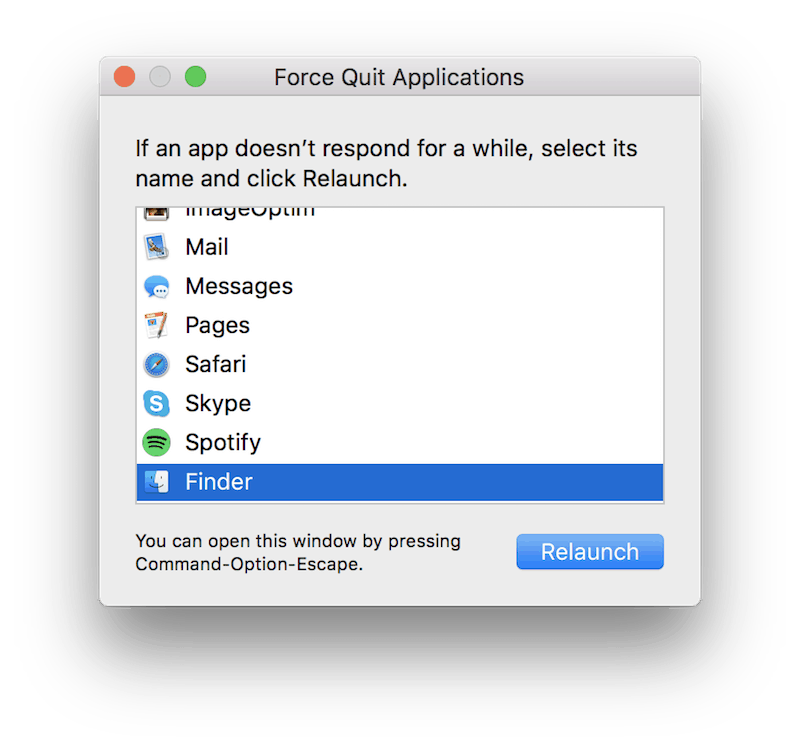
- #Mac force empty trash high sierra password#
- #Mac force empty trash high sierra free#
- #Mac force empty trash high sierra mac#
#Mac force empty trash high sierra password#
Now a command comes up password with a key but It will not accept the password.ģ) all I want to do is get this stuff out of my trash bin BUT. It asked me my password again and denied me access.
#Mac force empty trash high sierra mac#
Three hours later the space calculated in the trash bin by Clean my Mac was 2.2T more than the capacity of the external hard drive!Ģ) i went on line and tried the terminal commands to delete the files, all the files came up after the proper commands. 1) I tried deleting the files in the trash bin the normal way after an hour, it was still trying to delete them, I stopped and tried the Clean My Mac app. The iMac has been trying to empty the trash ALL DAY. While using Finder, Shift + Command + Delete. From any Finder window, go to Finder > Empty Trash from the menu bar. Control-click anywhere in the Trash folder and select Empty Trash. Open the Trash folder and click Empty in the upper-right corner. The backups moved to the trash bin on my iMac and thats when the party/problem started. Control-click the Trash icon on the Dock and select Empty Trash. Very Important to note the external hard drive is 2T with 274.36 GB available. There is still two years left that I have not selected.
#Mac force empty trash high sierra free#
I hope these instructions are clear, let me know if I need to explain something better.Time machine trash file size is larger than the external drive I made the mistake of trying to free up my time machine external hard drive but deleting old back ups. When finished, close the terminal window and use the Apple menu to restart. Select View, Show All Devices, or click the View button in the Disk Utility toolbar, and select Show All Devices from the popup menu. Be careful as it will delete anything you tell it to. Verify you have found it by using `ls` to see that it is there. Use the command `rm -rf ""` as before, once you have reached the folder where it is located. The only thing wrong with immediate gratificaton is: it takes to long. I dont think you can 'empty trash immediately all at once'. Scroll to the bottom of the list, select finder, and click on force quit. Depending on how many items you want to delete, multiple file paths may show up in Terminal. There is a way you can force your trash bin to empty for good and it can be done using Terminal. Drag the highlighted files into the Trash. I deleted the files from within the folders, no problem, but try to get rid of the empty folders and no luck. If you want to remove everything, press Command + A to highlight all files and folders instantly. You can use `ls` at any point to see what's available. or do option-command-escape the force quit applications window will come up. Select the files you want to delete while holding down the Command key. ` (two periods) to navigate back up to the previous folder.įor example, if you left the file in your home directory, you would type: You can use `ls` to see what's in the current directory and `cd ""` to navigate to the location of the file. Make sure to include the quotes.Īt this point you are now in your hard drive. Type `cd "Macintosh HD"` (replace Macintosh HD with the name of your disk if it's different). You should see the name of your disk (Macintosh HD) along with one or two other things. (If you receive a message saying that it may be locked, use the command it gives you, adding to the end as in the above command.) I will use as a placeholder in the subsequent instructions. The identifier for the volume Macintosh HD in this example is `disk1s1`. If your Mac’s running the latest version of the macOS but Trash still misbehaves, try the following fixes.

Yours may look different, but the important thing is the Macintosh HD.ġ: APFS Volume Macintosh HD 524.9 GB disk1s1 Here is part of the output from my computer. When you reach the recovery page, in the Utilities menu select terminal.įind the disk that is your computer's main hard drive. Startup is complete when you see the utilities window: Continue holding until you see the Apple logo or a spinning globe. Hold down Command-R or one of the other macOS Recovery key combinations on your keyboard immediately after pressing the power button to turn on your Mac, or immediately after your Mac begins to restart. Shut down your computer, and then while turning it on, hold command + r to boot into recovery mode (Instructions here: ) You don't need to type the ` characters.)įirst, move the file somewhere easy to get to on your computer, like your home folder. (In all the instructions below, tick marks ( ` ) indicate what to type. Alright, I have some steps you can take that should get this resolved.


 0 kommentar(er)
0 kommentar(er)
